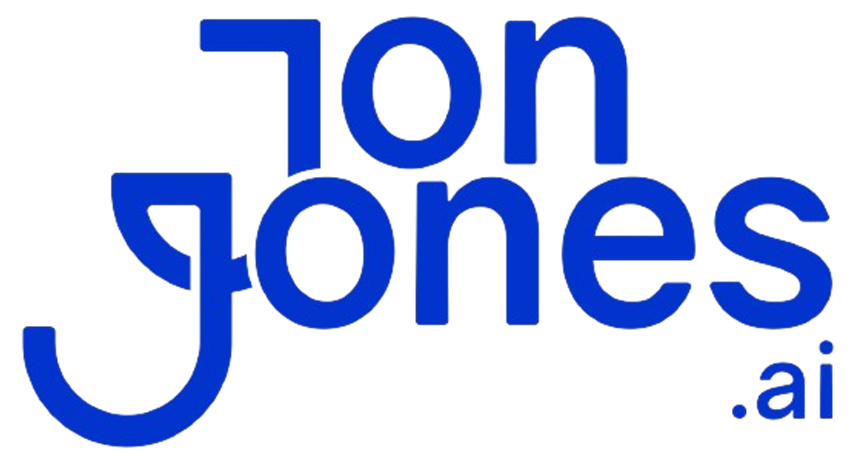Ever wish your daily tasks managed themselves so you can chase bigger goals? Business process automation (BPA) is like having a tireless teammate on your side. It handles your repetitive chores, from data entry to approvals, so you’ll drive growth.
Our clients see up to a 50% boost in speed and cut mistakes by as much as 70%. In this post, you’ll discover seven BPA examples that turn finance, HR, marketing, and more into well-oiled machines.
Ready to get your time back?
Key Examples of Business Process Automation Across Core Functions

Imagine your team breezing through repeat tasks without fuss. Business process automation (BPA) is software that handles those chores, things like data entry, approvals, and reports, so you can focus on growth. We’ve seen firms speed up work by 50% and slash errors by 30–70%.
By letting software do the heavy lifting, you get:
- Faster task completion
- Cleaner, more reliable data
- Lower operating costs
- Consistent results, since manual checks disappear
For a quick overview, check out what is business process automation.
Next, here are real-world BPA examples across key teams:
- Finance: Automated invoicing, real-time reporting, and purchase order approvals
- HR: New hire onboarding, payroll runs, and time-off tracking
- Marketing: Email drip campaigns and lead-nurturing workflows
- Operations: Inventory updates and logistics scheduling
- Support: Chatbots for instant replies and robotic process automation (RPA) (software that mimics human clicks) for routine ticket fixes
- Advanced: AI-driven approval routing and smart document scanning to take your automation even further
Finance and Accounting Business Process Automation Examples

Finance teams juggle hundreds of invoices, approvals, and reconciliation tasks every month. That’s when automation (using software to run routine tasks) steps in as your new teammate, cutting through the clutter and keeping things on track.
First up: invoice automation (creating, sending, and tracking bills). Tools like QuickBooks and Xero handle it for you. You’ll see billing cycles drop by 30–40% and errors fall by about half. Nice.
Next: purchase order automation (routing orders for sign-off). Platforms such as Coupa and SAP Ariba send reminders, guide approvals to the right managers, and keep a clear audit trail (a record of who approved what). That can shave roughly 25% off your approval times. Got it.
Then there’s accounts payable automation (AP, bills you owe) with Tipalti or Bill.com. It speeds up invoice matching and payments, cutting your processing time by around 50%.
And accounts receivable automation (AR, money customers owe) through Bill.com or Zoho Books nudges clients to pay on time, lowering days sales outstanding (DSO, average time to get paid) by about 35%.
Finally, financial reporting automation (scheduling and consolidating reports) with BlackLine or Adaptive Insights wipes out half the manual hours you used to spend wrestling spreadsheets. So you can dive into strategy, not data entry.
| Use Case | Tool Examples | Key Benefits |
|---|---|---|
| Invoicing | QuickBooks, Xero | 30–40% shorter billing cycles, ~50% fewer errors |
| Purchase Orders | Coupa, SAP Ariba | 25% faster approvals, built-in audit trail |
| Accounts Payable | Tipalti, Bill.com | ~50% cut in processing time |
| Accounts Receivable | Bill.com, Zoho Books | 35% lower days sales outstanding (DSO) |
| Financial Reporting | BlackLine, Adaptive Insights | 50% fewer manual hours, 30–70% error reduction |
Across these workflows, you’ll see 20–40% cost savings thanks to faster cycle times and fewer mistakes. That frees your team to focus on growth, not grunt work. Ready to ditch the manual grind? Let’s roll.
HR and Talent Management Business Process Automation Examples

We’ve all felt the pain of sorting resumes, chasing time-off requests, and wrestling with paperwork by hand. Those manual chores lead to lost forms, late paychecks, and new hires just twiddling their thumbs.
So we bring in HR automation: software that tackles busy work so we can focus on people, not piles of forms. You’ll see fewer mistakes, faster replies, and a happier team.
Recruitment workflows shine when AI (artificial intelligence) driven screening tools skim thousands of resumes in minutes. You cut time-to-hire by about 40% and instantly highlight your top candidates. Nice.
Tools like BambooHR and Workday handle onboarding next. They grab new hire documents, launch training modules, assign laptops and badges, and book intro meetings. This can slash your onboarding cycle from four weeks down to five days.
Then there’s payroll automation. It runs compliance checks, applies state and federal tax rules, and delivers accurate pay stubs right on time. No more crunching numbers by hand.
Time tracking solutions power digital workflows for leave and hours approvals. Tulsa Community College sped up vacation approvals by 70%. And since it ties into payroll, errors barely sneak through. Got it.
Finally, automated KPI dashboards and help-desk ticket systems light up with retention risks. You’ll track turnover rates and response times, catch issues early, and boost employee satisfaction.
With automation, we spend less time on admin and more time on what really matters: our people.
Marketing Business Process Automation Examples

Marketing teams juggle audience outreach, content calendars, and campaign reports day after day. When we set up marketing automation (software that handles routine tasks like sending emails and posting on social), you hand off those chores to smart tools. Then you get to focus on creativity, and see more engagement, faster growth, and crystal-clear ROI. Nice.
Email campaigns run themselves with tools like Mailchimp and HubSpot. They sort your list, schedule sends, and even run A/B tests (comparing two subject lines to see which one wins). We’ve watched open rates jump 25-35%.
Lead nurturing workflows (step-by-step processes that send people personalized drip content based on their actions) trim about 20% off your sales cycle. You’re talking the right message at the right time without lifting a finger.
Social media schedulers like Buffer or Hootsuite queue up 7-10 posts a week across channels so your brand stays top of mind, with no manual uploads needed.
And CRM (customer relationship management) automation in platforms such as Salesforce and Pipedrive assigns leads, scores them, and pings your team with follow-up reminders. That boost can drive roughly 30% more sales-ready leads.
See how automated lead generation with AI ties it all together, feeding high-quality prospects straight into your pipeline. It’s all powered by AI (artificial intelligence, a system that learns from your data). Got it.
Supply Chain and Operations Business Process Automation Examples

Every day, you and your operations team juggle inventory counts, warehouse flows, order packing, and last-mile deliveries. One missed handoff or blind spot in routing can stall the whole chain and spike your expenses.
So we lean on automation software to smooth each step and keep goods on the move.
Here are some real-world tools in action:
• Inventory Tracking: Zoho Inventory sends reorder alerts when stock falls below your set level. You dodge stock-outs and slash emergency rush orders.
• Warehouse Automation: Fishbowl and Manhattan WMS (warehouse management system) automate pick-and-pack workflows, like scanning an item and dropping it into its boxing station, boosting throughput by about 25%.
• Order Fulfillment: ShipStation ties in carriers, auto-prints labels, and updates tracking info in real time. You cut manual steps and trim prep time by roughly 30%.
• Route Planning: Route4Me and OptimoRoute use route optimization algorithms (step-by-step math rules that find the fastest paths) to shave 15% off fuel costs and speed up deliveries by 20%.
Next, we funnel these metrics, inventory levels, fulfillment progress, and delivery routes, into a live dashboard (a visual display of key data). One look gives you real-time clarity and lets you make smart moves instantly. Results matter.
Customer Service and IT Business Process Automation Examples

Today’s customers expect help on chat, messaging, or email, any hour, from anywhere. Your IT team is juggling thousands of tickets, strict service-level agreement (SLA) targets, and zero room for mistakes. Traditional support methods just can’t keep up, so backlogs pile higher.
We get it. We’ve built automations that scale. Our customer service and IT process examples show how real teams handle ticket spikes without adding headcount.
Here are four tactics you can use right now:
- Smart chatbots powered by natural language processing (NLP, tech that reads and answers user questions) in Zendesk and Intercom. They handle password resets, order-status checks, and basic troubleshooting, deflecting about 60% of routine tickets.
- Automated ticket tagging in ServiceNow. Simple rules tag, prioritize, and forward issues to the right team, cutting resolution times by 40% and spotting repeat problems sooner.
- Self-service portals with a searchable knowledge base. Customers solve common issues on their own, dropping new ticket volume by around 25% and clearing your queues.
- RPA bots (robotic process automation). They log tickets, triage requests, escalate when needed, and close routine cases automatically. That frees up about two hours of manual work per agent every day.
So whether you want to slash resolution times or shrink your backlog, these automations have your back. You’ll free up your agents and let them tackle the complex issues that really need a human touch.
Cross-Department AI and RPA Business Process Automation Examples

AI (artificial intelligence, systems that learn from data) and robotic process automation (RPA, software that mimics clicks) pack a serious punch for everyday business process automation (BPA). We add machine learning (algorithms that spot patterns) so bots can detect trends and tweak workflows on the fly. Modern business process management (BPM, tools that map and automate tasks) lets you draw step-by-step flowcharts, no code needed, and connect old systems to cloud apps in one go.
In audit teams, RPA cuts compliance checks to half the time of manual efforts. You scan ledgers and logs in minutes instead of hours, and bots even learn to flag odd entries. Nice.
On the claims side, a Norwegian startup called Wenn uses AI image processing (software that “sees” damage like a human) to shrink car-damage checks from 15 minutes down to just six seconds, a 99.33 percent speed boost.
No-code BPM tools like ClickUp and Make help you stitch cloud apps together. You push data, fire off alerts, and auto-create tasks without writing a single line of script. We guide enterprise teams to compare platforms by setup ease, integration depth, prebuilt connectors, and analytics, so you nail the best fit.
Studies show 70 percent of enterprises automate at least one key process and 40 percent dedicate staff roles just for automation. Since these cloud-based solutions scale across teams and locations, you can roll out new workflows in days, not months. That frees your team to focus on strategy and growth.
Final Words
In the action, you saw how business process automation examples power finance, HR, marketing, operations, support and AI-driven workflows. We covered tools that slash invoice cycles by 40%, speed up onboarding, and trigger drip campaigns without lifting a finger.
You now have a hands-on view of real gains – think 50% fewer manual hours and error drops of up to 70%.
Business process automation delivers smarter, smoother growth. Go ahead and pick one process to automate, and watch your efficiency soar.
FAQ
What does business process automation (BPA) mean?
Business process automation (BPA) means using software to automate repetitive tasks like invoicing or reporting, boosting efficiency up to 50% and cutting error rates by 30–70%.
What is an example of business process automation?
Examples include QuickBooks auto-sending invoices (30–40% faster billing), BambooHR managing onboarding workflows, Mailchimp scheduling email campaigns, and chatbots handling tier-1 support.
What are real-life use cases of process automation?
Real-life cases span finance (automated invoicing, PO approvals), HR (payroll scheduling, resume screening), marketing (drip email campaigns, social media posting), and operations (inventory alerts, route optimization).
What tools are used for business process automation?
Tools range from QuickBooks and Xero for finance, BambooHR for HR, Mailchimp and HubSpot for marketing, Salesforce for CRM, to RPA platforms like UiPath and no-code BPM tools like ClickUp.
What is Robotic Process Automation (RPA)?
Robotic Process Automation (RPA) uses software bots to mimic human actions—such as logging tickets or matching invoices—halving manual steps and freeing teams for strategic work.






